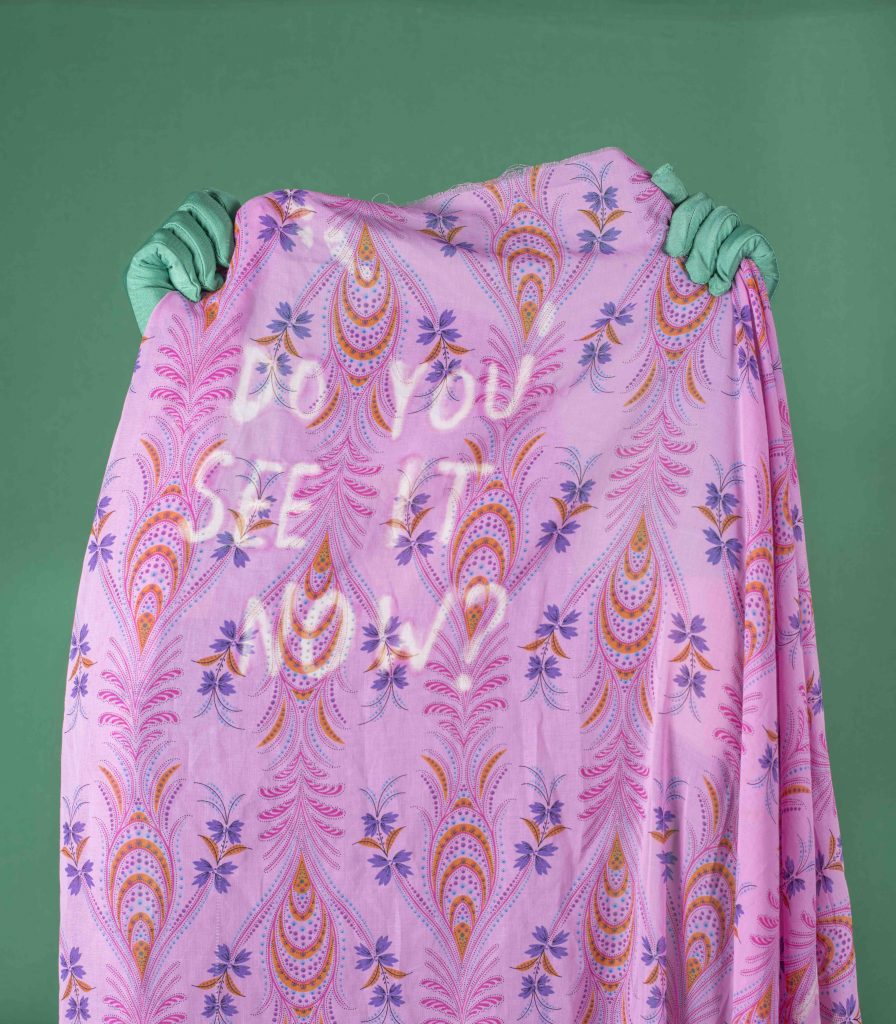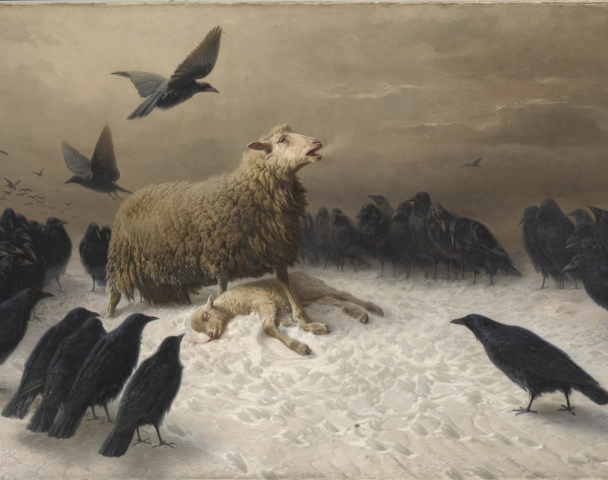Every Wednesday morning, Artnet News brings you The Gray Market. The column decodes important stories from the previous week—and offers unparalleled insight into the inner workings of the art industry in the process.
This week, a gut check for the crypto revolution…
ALTERNATE REALITY
Just before New Year’s, I tweeted this:
“Can’t help wondering: What if instead of NFTs, a bunch of legit artists and dealers just… regularly offered new works in other media that anyone, anywhere could buy for $400–500—and treated them as *real* pieces, not merch or one-off benefit projects?”
My question was half sincere, half provocation. The sincerity came from what I would call the most encouraging aspect of the NFT power surge. After years and years spent making work that was largely shunted into a niche within a niche, many artists who have long been conversant with new media and advanced tech suddenly became the object of robust fandoms. Just as important, those fandoms made the work pay off financially for these artists in ways it never had before.
Driving this heartening outcome has been the emergence of a sizable buying public parallel to the one for analog artworks. Say what you will about what it has meant for the discourse around NFTs, but there’s no denying that many, if not most, participants in the market have backgrounds short on exposure to the art establishment. And while there are technological barriers to surmount when it comes to trading NFTs, the starting prices of the works—even for artists with legit institutional or gallery credentials—tend to be much friendlier than for their analog pieces, usually topping out at a few hundred bucks each.
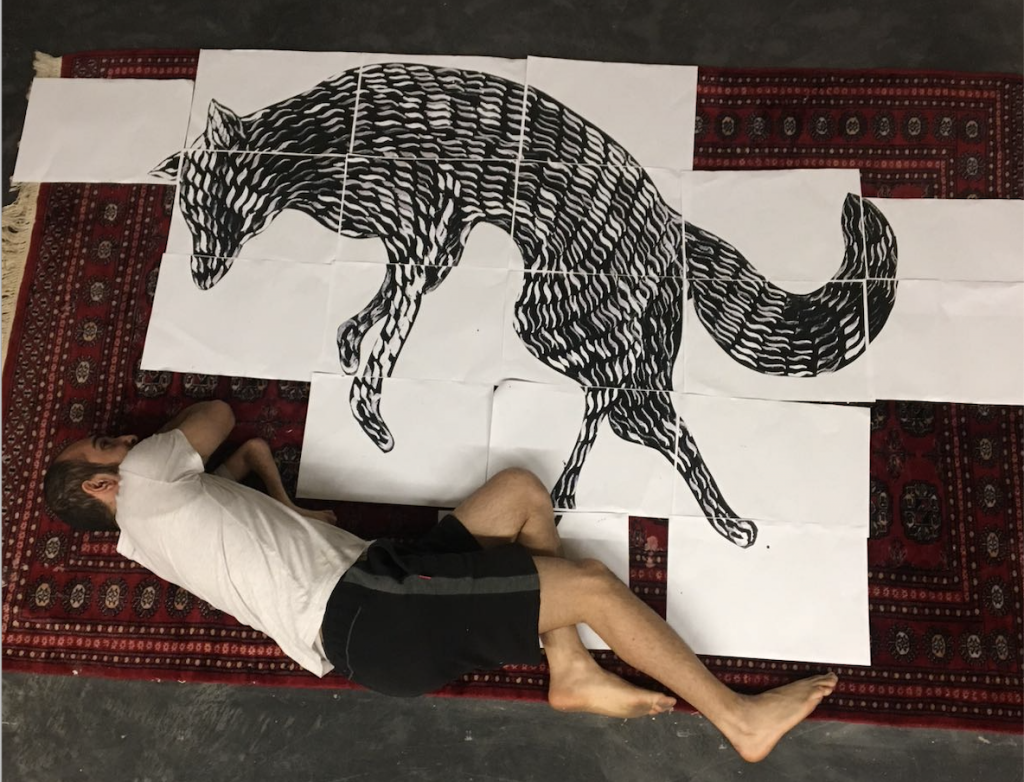
Mohammad Barrangi and a work in progress. Courtesy of the artist and Edinburgh Printmakers.
But the provocation in my tweet was that there are multiple reasons that crypto was necessary to build this active, (relatively) populist market for a particular subgenre of art. It’s very difficult to figure out how to make a worthwhile margin on analog artworks in a $400 to $500 price band, especially if a gallery (meaning, its sales commission) is involved. The value proposition is less appealing to potential buyers because of the carrying costs and the logistics necessary to own physical pieces: shipping, framing, and if a collection grows large enough, quality off-site storage.
The expenses and logistics around affordable physical editions also discourage the development of a secondary market as frenzied as the one for NFTs. I know plenty of everyday people have become active eBay sellers for all sorts of things, but packing, shipping, insuring, and vouchsafing the condition of physical artworks isn’t exactly the average citizen’s idea of an appealing sideline. Even actual art dealers don’t want to hassle with doing this stuff, which is why they generally hire registrars as soon as possible!
Still, there’s an even deeper reason that a frenetic market for $400 prints has zero chance of developing now, even if it were supplied by both global stars and reputable but long-underappreciated artists: the crypto-art trade has been propelled by a belief that the underlying tech can make anyone rich almost overnight. There is plenty of supporting evidence by now, too, even if the highs can later turn into crushing lows.
In contrast, not even the most obscene excesses of art-market speculation could convince the general public that the ticket to rapid wealth accumulation in 2022 is lithography. So the New York Times can put out an episode of the Daily called “A Conversation With a Dogecoin Millionaire,” but the idea that we would ever hear an episode called “A Conversation With a $400 Aquatint Millionaire” is a weird fantasy.
This pillar of NFT-market psychology was one of the core criticisms made in arguably the most talked-about piece in crypto art circles this past weekend: Signal founder Moxie Marlinspike’s “My First Impressions of Web3.” It’s ultimately a pretty blistering critique of what many Silicon Valley entrepreneurs, venture capitalists, and futurists (professional and amateur alike) see as the next phase of the internet, under the mantle of web3 (or Web3, or web 3.0—even the verbiage lacks consensus right now). But while most of Marlinspike’s big punches land squarely on their intended target, others distract from the ways that the most thoughtful artists, buyers, and intermediaries are already controlling for, and even instrumentalizing, NFTs as a medium.
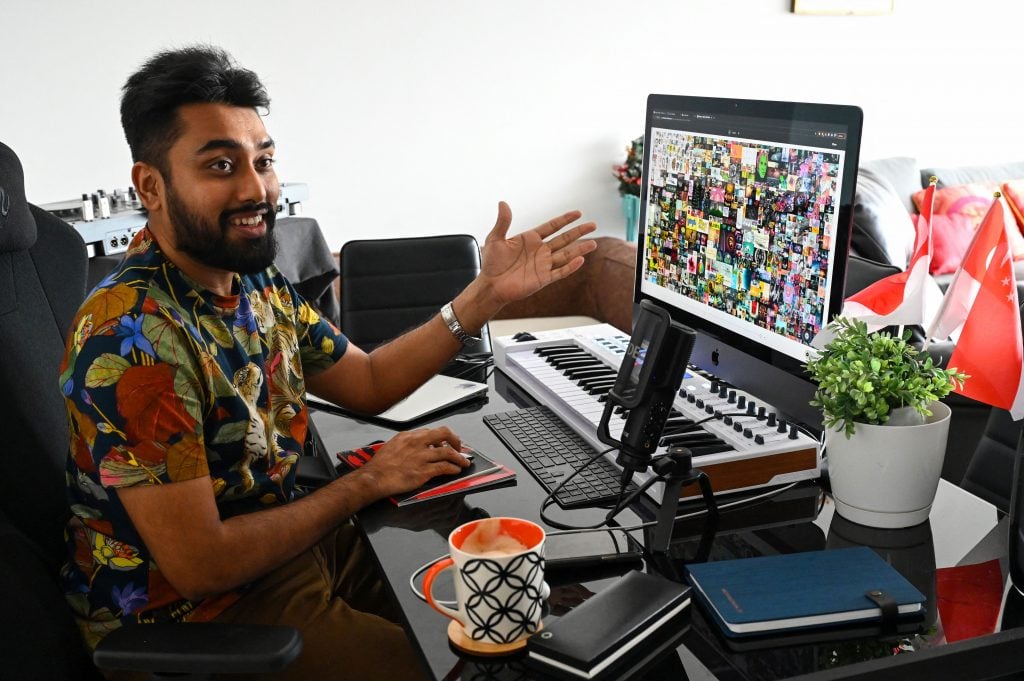
Blockchain entrepreneur Vignesh Sundaresan (AKA Metakovan) showing off Beeple’s Everydays: The First 5,000 Days (2021) in his home in Singapore for an interview with Catherine Lai on April 7, 2021. (Photo by Roslan Rahman / AFP via Getty Images)
THE CENTRAL PROBLEM
For the uninitiated, web3 basically refers to a future in which users create, distribute, and own the content they produce online rather than relying on the platforms that have dominated web2 and, too often, exploited us for profit in the process. To paraphrase Marlinspike (who I believe uses they/them pronouns), the web began as a decentralized network before centralizing around a band of Big Tech behemoths that started with the likes of AOL, Netscape, and Microsoft before giving way to Google, Facebook, Amazon, et al. But web3 pledges to decentralize again, largely via the power of blockchains.
The problem is that, in practice, web3 so far is largely doing the opposite of what it’s promised to do—a conclusion Marlinspike reached after experimenting with NFTs and decentralized apps (“dApps”). Pivotal to their argument is that the crypto market is being shaped by two separate levels of centralization at two very different levels of visibility to the average user. Both are poison to the supposed liberatory essence of web3, and they are already in the groundwater.
The clearly visible centralization is happening on platforms at every stage of the crypto economy, from cryptocurrency exchanges (see: Coinbase, Binance), to NFT marketplaces (see: OpenSea, Nifty Gateway), to data-viewing tools (see: Etherscan, which allows anyone to read transactions on the Ethereum blockchain). In theory, users could independently accomplish everything these platforms accomplish. It’s just that the large amounts of expertise and time required to do so are prohibitive to the average person, incentivizing them to rely on platforms to speed up the process.
But the crypto economy also harbors a second level of centralization hidden to everyone but advanced technologists. During Marlinspike’s experimentation with NFTs, they discovered that “almost all dApps” only interact with the Ethereum blockchain (which underlies most NFT transactions today) through one of two privately owned and operated software intermediaries called Infura and Alchemy. This is true even for MetaMask, understood within the NFT space to be the most popular crypto wallet in use. “In fact,” Marlinspike writes, “even when you connect a wallet like MetaMask to a dApp, and the dApp interacts with the blockchain via your wallet, MetaMask is just making calls to Infura!”
The grand paradox of crypto, however, is that the ecosystem has tacked toward centralization on both levels from the beginning because centralization improves the user experience, and an improved user experience enables the market to scale up. Here’s the most damning excerpt of Marlinspike’s piece, as well as the answer to why we’ll never see a robust market for $400 editioned physical artworks:
When you think about it, OpenSea would actually be much “better” in the immediate sense if all the web3 parts were gone. It would be faster, cheaper for everyone, and easier to use… However, if they had built a platform to buy and sell images that wasn’t nominally based on crypto, I don’t think it would have taken off. Not because it isn’t distributed, because as we’ve seen so much of what’s required to make it work is already not distributed. I don’t think it would have taken off because this is a gold rush. People have made money through cryptocurrency speculation, those people are interested in spending that cryptocurrency in ways that support their investment while offering additional returns, and so that defines the setting for the market of transfer of wealth.
Where does Marlinspike think this leads? “Eventually, all the web3 parts are gone, and you have a website for buying and selling JPEGS with your debit card. The project can’t start as a web2 platform because of the market dynamics, but the same market dynamics and the fundamental forces of centralization will likely drive it to end up there.”
That would be a bleak ending for what has been billed as a democratic revolution. But for the sake of devil’s advocacy, there may be more daylight left for NFTs than Marlinspike is acknowledging, even if only within the medium’s true avant-garde.
THE CREATIVE EDGE CASES
The most entertaining part of Marlinspike’s piece arrives when they describe minting and offering an NFT whose appearance changes depending on where it’s viewed. The move hinges on the fact that most NFTs consist of metadata usually containing a link to an actual asset (in this case, a visual artwork) hosted elsewhere. Marlinspike’s argument is that whoever controls the destination of the link controls the NFT’s visual output regardless of what is recorded on the blockchain, and they went about proving it in mischievous fashion:
So as an experiment, I made an NFT that changes based on who is looking at it, since the web server that serves the image can choose to serve different images based on the IP or User Agent of the requester. For example, it looked one way on OpenSea, another way on Rarible, but when you buy it and view it from your crypto wallet, it will always display as a large ? emoji. What you bid on isn’t what you get. There’s nothing unusual about this NFT, it’s how the NFT specifications are built. Many of the highest priced NFTs could turn into ? emoji at any time; I just made it explicit.
However, Marlinspike is somewhat overstating the case here, according to people I trust in the NFT and digital art spaces. Yes, upkeep of the digital trail in an NFT’s metadata is crucial for the long-term preservation of any asset it certifies ownership to. But NFT metadata can contain more than just a single link (known as a URI) that points to a single asset.
What Marlinspike seems to be playing with (and glossing over) is that crypto wallets and exchange platforms are only built to display preview images of any NFTs they contain. In practice, this tends to be an inconsequential detail, since the average crypto artist will only upload a single file under 100 megabytes that can do double duty as both the preview image and the “actual” asset for the NFT.
Yet there are also ways to pin an NFT to another file instead of the (compulsory) preview image—say, a larger, less compressed file intended for archival or exhibition purposes. In that case, though, neither crypto wallets nor marketplaces like OpenSea are built to process the larger additional file; they can only process the smaller preview image.
In other words, what you see in your crypto wallet or on OpenSea doesn’t have to be the full artwork any more than a full-length film has to fit into the runtime of a movie trailer. Marlinspike is right to point out that this quirk opens a gap in the NFT ecosystem. It just isn’t necessarily a gap that leads to fraud. (Even in would-be scams, you could still use Etherscan to see where the ultimate link in the metadata points.)
Stepping back further, the larger counterpoint is that the code in any NFT’s smart contract is mutable. Marlinspike is portraying this as an inherent problem with the NFT format that can empower bad actors. They aren’t wrong about this, necessarily, but they are shading the argument to a certain extent.
Mutability is an inherent reality of every file ever created in the history of digital media; only the degree and purpose of the mutability changes from file to file, project to project, artwork to artwork. At a basic level, most artists who create software-based works want to make updates to those works sooner or later.
It might be to fix bugs discovered after the initial unveiling of the piece. It might be to optimize the piece for a new hardware display or installation environment. It might be to migrate the piece from a file type and/or hardware apparatus in imminent danger of obsolescence to new alternatives more suited to the era. All of the above (and more) would be creatively valid, technologically sound, pro-collector moves.
But when it comes to NFTs, don’t these updates clash with the blockchain’s status as an “immutable ledger”? Not really.
It’s true that the Ethereum blockchain was never built with digital artwork in mind, and so it was not built to allow for change; in fact, it was built to validate that the data it tracks does not change. Other blockchains built since then, however, have been specifically built to accommodate crypto artwork. One of these is Palm, which underlies the NFTs minted by Pace’s in-house Verso platform. Flow, another alt-chain that some crypto-conversant artists are exploring, can record the entire history of code updates made to a single NFT, making it a more nimble solution for an inconvenient reality of the medium.
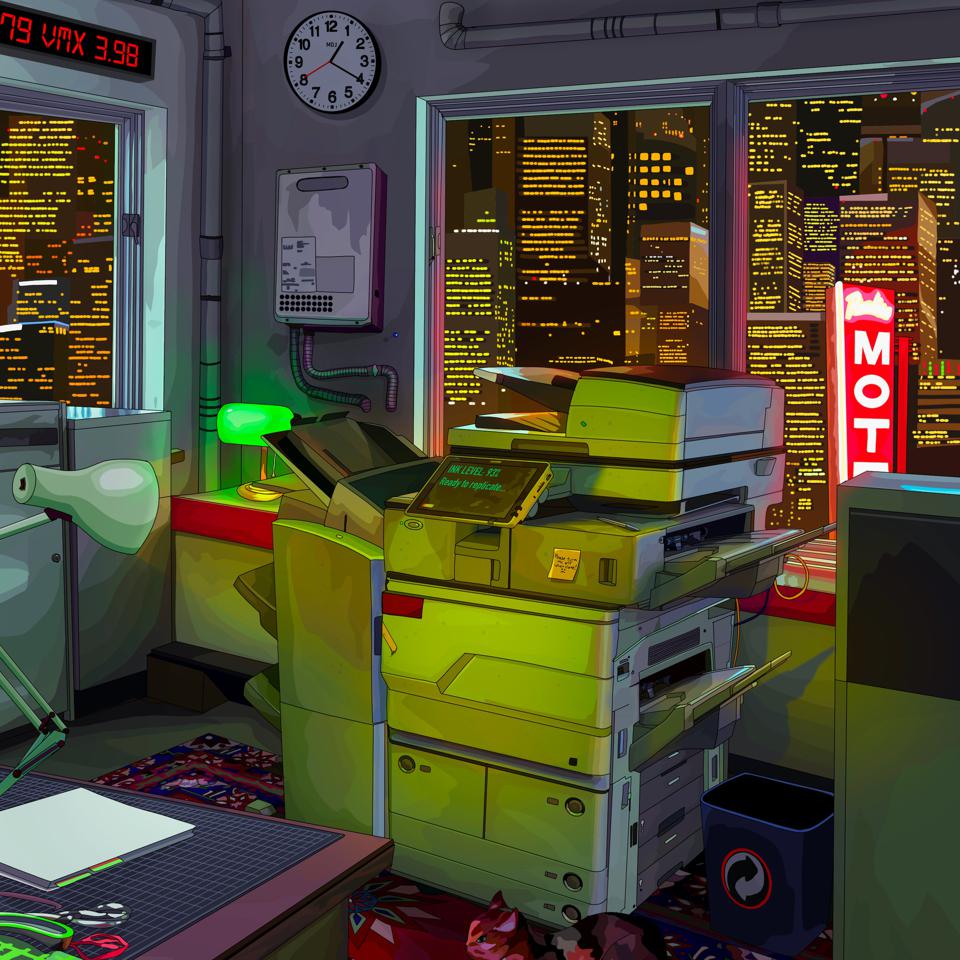
Mad Dog Jones, REPLICATOR (2021). Courtesy of Phillips.
Some artists and collectors are even prioritizing programmatic NFTs, which embrace mutability by carrying out some kind of dynamic function. Take Mad Dog Jones’s $4.1 million Replicator (2021), an NFT that generates unique editions of itself every 28 days. Or Pak’s Hate, a token that the artist issued only to users who had tweeted negative things about them… and which recipients discovered they could not move from their crypto wallets or sell, before Pak eventually snatched back the NFTs and destroyed them remotely. At least one crypto art platform, DRP.io, has expressly set out to work with artists intent on using NFTs as an artistic medium, not just a sales mechanism.
Even Marlinspike’s poop-emoji experiment could be portrayed as a programmatic artwork. In all cases, the work is mutable because the smart contract’s code is mutable—and that could be considered a value proposition, not a “buyer beware.”
A FORK IN HISTORY?
All of which leads us back to the quiet tyranny of a platform-dependent web3. Marlinspike says that their experimental NFT was removed from OpenSea a few days after they offered it there “without warning or explanation,” presumably for violating the exchange’s terms of service.
But Marlinspike says they found nothing in the fine print that would have outlawed the work, particularly since they detailed the mutable aspects of the NFT in the piece’s OpenSea description. The move smacks of the mysterious takedowns that Instagram, Facebook, and other social-media platforms have performed on so many artists’ posts in the web2 era. This is an ominous precedent for the internet’s supposed next evolution.
In the end, Marlinspike all but dismisses the prospect of a fully decentralized web, arguing that platforms originally rose to prominence because the average person had no interest in, say, running their own email server in the first phase of the internet. So why would they want to set up and maintain their own blockchain nodes to make sure web3 fulfills its utopian promises?
I tend to agree with this thinking, though some tech historians might argue that the average person’s level of computer literacy in the 2020s is so far advanced from what it was in the mid-1990s (when AOL and Netscape started bombarding the populace with their products) that the past is a faulty indicator.
Even so, Marlinspike holds out some small hope for the future. They recommend finding ways to build systems that “distribute trust without distributing infrastructure,” as well as making apps and dApps easier to construct than they are today, when each product is usually the work of a dozens-strong team of engineers.
Yet Marlinspike also acknowledges that the incentives are stacked against these open-source, pro-user pivots. Without a fork in history, then, the best way to imagine the next several decades of the crypto economy is to look back at the centralizing results of the past year. The same could very well be true of the NFT market. It just doesn’t necessarily have to be.
[Moxie Marlinspike]
That’s all for this week. ‘Til next time, remember: the devil is in the details, but how important is the devil when Big Tech is the deity in control?
